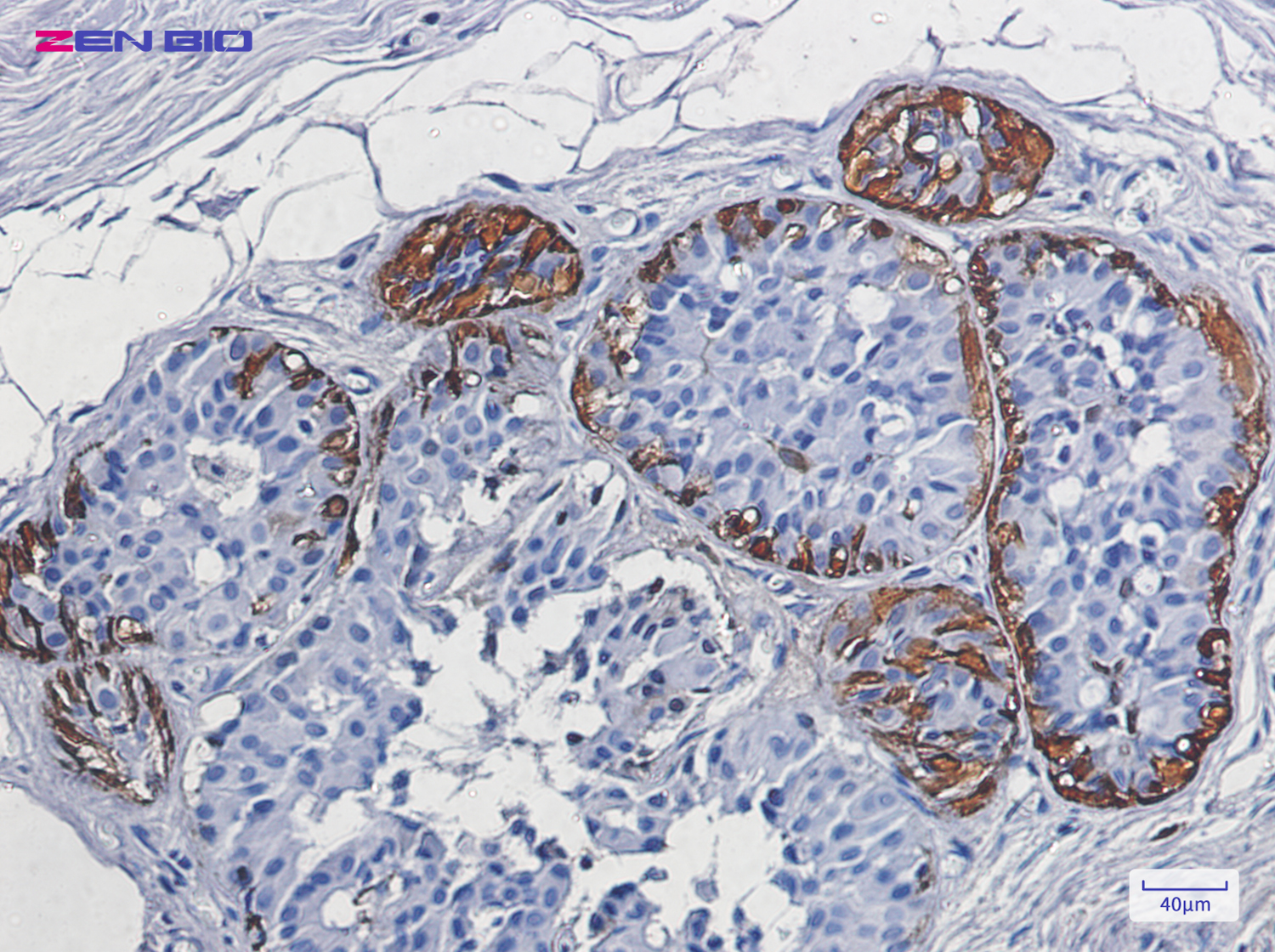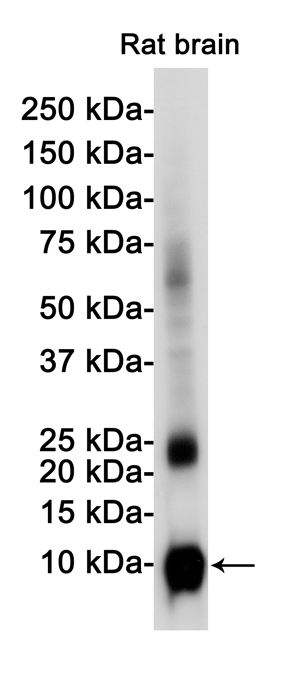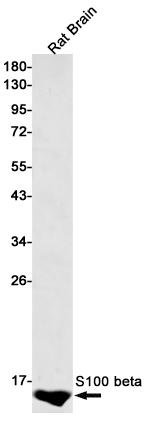-
Product Name
Anti-S100 beta Rabbit antibody
- Documents
-
Description
S100 beta Rabbit polyclonal antibody
-
Tested applications
WB, IHC-P, ICC/IF, IP
-
Species reactivity
Human, Mouse, Rat
-
Alternative names
NEF; S100; S100-B; S100beta antibody
-
Isotype
Rabbit IgG
-
Preparation
Antigen: A synthetic peptide of human S100 beta
-
Clonality
Polyclonal
-
Formulation
Supplied in 50nM Tris-Glycine(pH 7.4), 0.15M Nacl, 40%Glycerol, 0.01% sodium azide and 0.05% BSA.
-
Storage instructions
Store at -20°C. Stable for 12 months from date of receipt.
-
Applications
WB: 1/1000
IHC: 1/50-1/200
ICC/IF: 1/20
IP: 1/20
-
Validations

Immunohistochemistry of S100 beta in paraffin-embedded Human breast cancer tissue using S100 beta Rabbit pAb at dilution 1/50

Western blot detection of S100 beta in Rat Brain lysates using S100 beta Rabbit pAb(1:1000 diluted).Predicted band size:11KDa.Observed band size:11KDa.

Western blot detection of S100 beta in Rat Brain lysates using S100 beta Rabbit pAb(1:500 diluted).Predicted band size:11kDa.Observed band size:11kDa.
-
Background
Swiss-Prot Acc.P04271.Weakly binds calcium but binds zinc very tightly-distinct binding sites with different affinities exist for both ions on each monomer. Physiological concentrations of potassium ion antagonize the binding of both divalent cations, especially affecting high-affinity calcium-binding sites. Binds to and initiates the activation of STK38 by releasing autoinhibitory intramolecular interactions within the kinase. Interaction with AGER after myocardial infarction may play a role in myocyte apoptosis by activating ERK1/2 and p53/TP53 signaling. Could assist ATAD3A cytoplasmic processing, preventing aggregation and favoring mitochondrial localization. May mediate calcium-dependent regulation on many physiological processes by interacting with other proteins, such as TPR-containing proteins, and modulating their activity.
Related Products / Services
Please note: All products are "FOR RESEARCH USE ONLY AND ARE NOT INTENDED FOR DIAGNOSTIC OR THERAPEUTIC USE"
